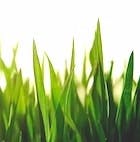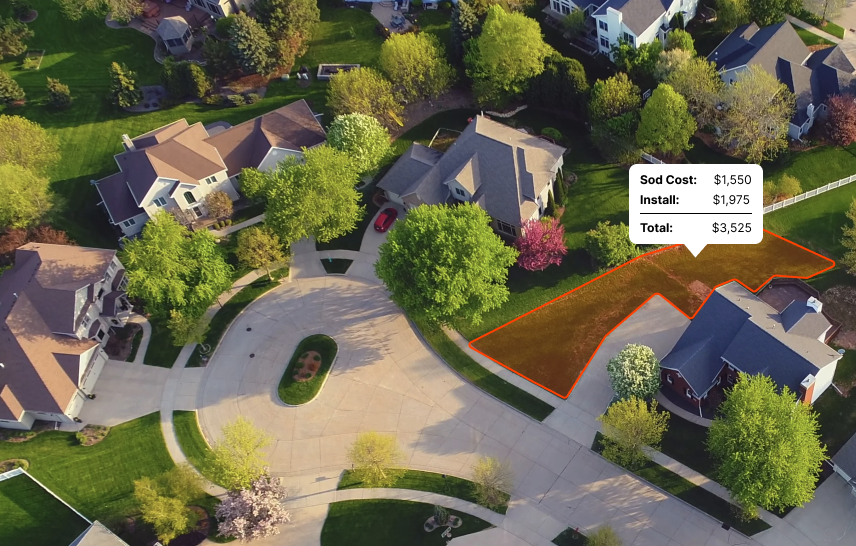Pennsylvania weather can play hard to get in spring, demanding a bit more elbow grease to keep your lawn looking its best. So there you have it: Pennsylvania, where the climate's a humid subtropical dance of four seasons, the grass has a cool-season vibe, and the ideal time to plant is when summer starts giving way to fall.”
Introduction
Pennsylvania, nestled up in the northeastern corner of the U.S., lives and breathes humidity with a side of four full-bodied seasons. Summers? They're hot, sticky affairs.
Winters? Cold as a well digger's boot and snowy to boot. But spring and fall are when Pennsylvania gives a little break, mellowing out to something truly delightful.
Now, when it comes to growing grass in Pennsylvania, it's not a one-size-fits-all situation. But generally speaking, this state's a fan of cool-season grasses. Kentucky bluegrass and tall fescue, they're the heartthrobs of Pennsylvania lawns, loving those cooler temps.
If you're looking to roll out the green carpet in Pennsylvania, mark your calendar for late summer or early fall, anytime from mid-August through mid-October. It's prime time for your grass to put down roots and brace for winter. Spring can work too, but keep an eye on the sky.
What are the best sod types for PA?
In the world of landscaping, not all grasses are created equal. Each thrives in a specific climate zone: cool, warm, or transition.
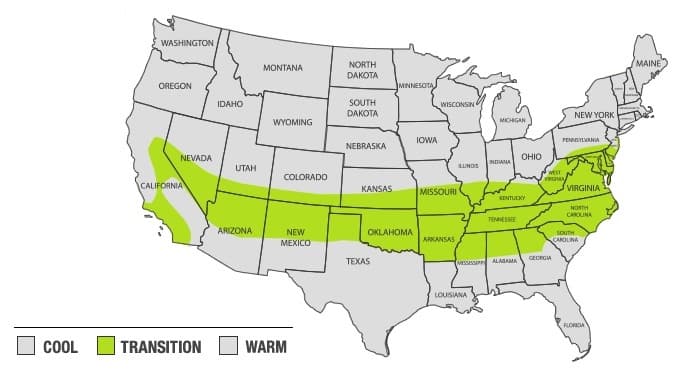
Pennsylvania, with its transition zone climate, prefers a particular set of grasses that relish the a wide range of temperatures. The following sods are the easiest to grow and maintain in Pennsylvania:
While it's possible to grow grasses meant for other regions with proper care, attention and timing, these are the most common grasses in Pennsylvania for residential lawns.
Level Up Your Lawn Skills
Once per week we'll send you an interview from someone who has mastered the art of lawn care.
Recommended species for shade
When it comes to shade-tolerant grasses in Pennsylvania, the top dogs are Tall Fescue, Kentucky Bluegrass, and Fine Fescue. These grass types can handle less sunlight and still maintain their health and vibrancy.
Tall Fescue thrives in PA. We're talking about a grass type that's drought-tolerant, handles high traffic well, and loves about 4-6 hours of sunlight daily. Yes, only 4-6. It can thrive in full sun, but let's just say Tall Fescue doesn't mind hanging out in the shade.
Kentucky Bluegrass is another hot pick. These blue-green blades can chill in about 4 hours of sunlight each day. It's the slow-and-steady type. It might take a bit longer to establish, but once it does, it'll stick with you through thick and thin. Plus, it creates an incredibly dense and lush lawn that makes the neighbors go green with envy.
Fine Fescue, our last shady superstar, actually does well in heavy shade. It needs just 3 hours of sunlight—minimum. Lack of sunlight isn't an issue here. It stands tall and strong, even when the going gets tough. Bonus: it's also notably resistant to diseases and pests.
So, whether your yard is always kissing the sun or cuddling with the shade, these grass types got you covered. Choosing the perfect sod isn't rocket science when you know your options. And remember, friends, grass is always greener where you water it. Don't skimp on the TLC these grass types need. They're resilient, but much like us, a little care goes a long way.
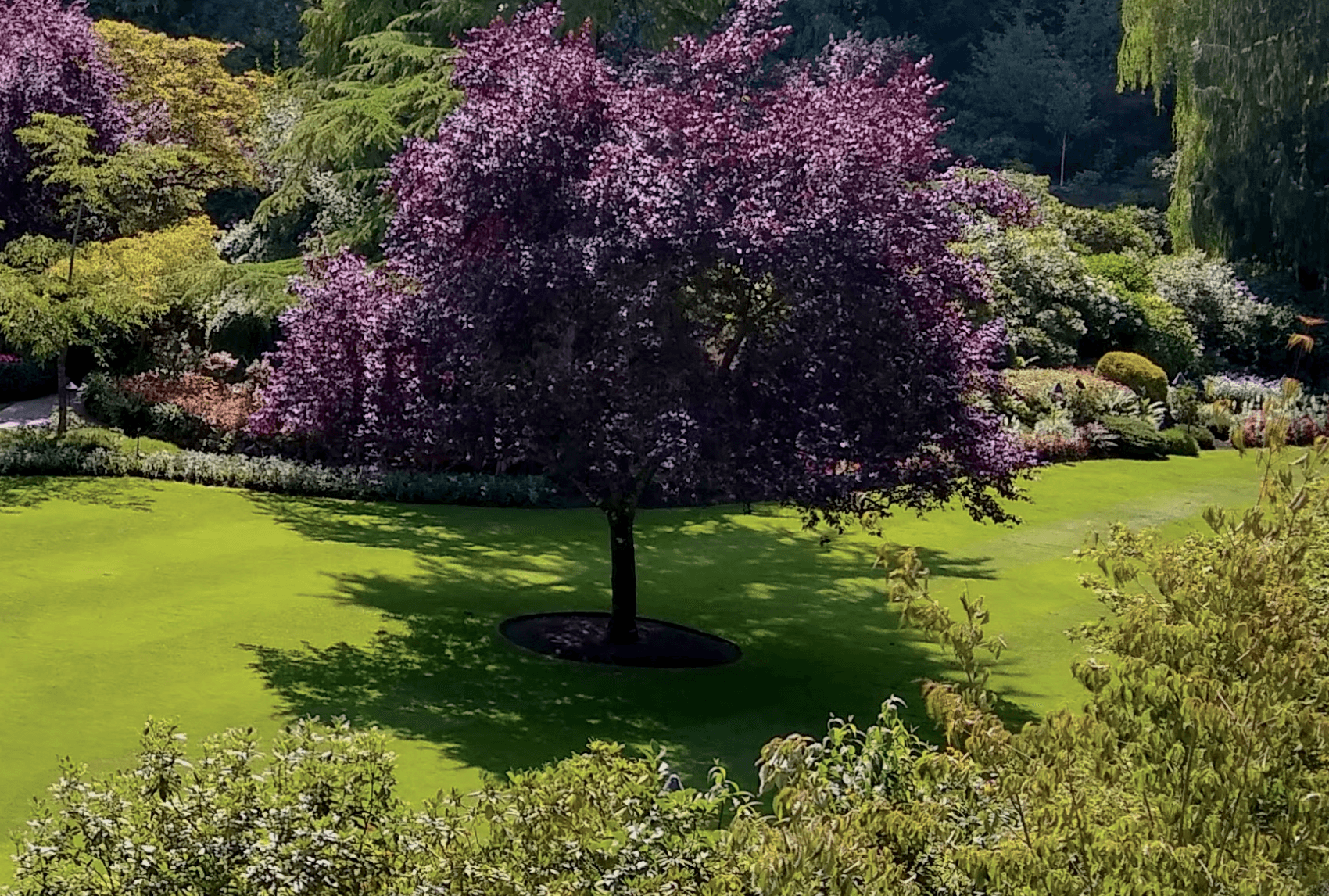
Recommended for full sun or partial sun
Choosing the right sod for your lawn depends heavily on the sunlight exposure in your yard. Different grass types have varying light requirements for optimal growth and appearance. Assessing whether your lawn receives full or partial sun is essential in selecting sod that will flourish and stay healthy in your specific environment.
Below are some sod options recommended for either full sun or partial sun conditions in PA:
| Grass Type | Sun | Good to Know |
|---|---|---|
| Tall Fescue | Partial | Tall Fescue is adaptable to a range of conditions, including partial sun, and is known for its deep root system and tolerance to drought. |
| Kentucky Bluegrass | Full | Kentucky Bluegrass prefers full sun and is prized for its fine texture, rich color, and ability to recover quickly from damage. |
| Perennial Ryegrass | Full | Perennial Ryegrass thrives in full sun and is known for its rapid germination, fine texture, and bright green color. |
| Fine Fescue | Partial | Fine Fescue is well-suited for partial sun and is appreciated for its fine texture, shade tolerance, and low maintenance requirements. |
What varieties stay green year-round?
As with anything agriculture related, there is some nuance to this question. There are many grasses that can stay green year round in but it depends heavily on your location within Pennsylvania as well as any microclimates that may exist.
The following grasses have the ability to stay green year round in Pennsylvania:
| Grass Type | Caveats |
|---|---|
| Tall Fescue | It typically stays green throughout the year in milder climates, given that it isn't overly stressed by heat or drought in the summer. |
| Kentucky Bluegrass | It can retain its green color for much of the year when well-maintained, though harsh winter temperatures can push it towards dormancy and a browner hue. |
| Perennial Ryegrass | It can stay vibrant and green throughout the year in many climates, unless conditions are extremely cold or dry. |
| Fine Fescue | It keeps its green color throughout the year in ideal conditions. If the winters are particularly harsh, it may lose some color. |
What is the best time to lay sod in Pennsylvania?
For transition zones, consider the type of sod. For warm season grasses, aim for late spring. This gives them a full summer to establish before winter. For cool season grasses, fall is best, allowing roots to develop in mild temperatures. Whichever you pick, avoid extremes of summer and winter. So, late spring for warm grasses, fall for cool ones, and skip the severe seasons.
As you can see in the image below, you'll notice the most shoot growth (the grass above ground) and root growth in the spring and fall for cool season grases and during the summer for warm season grasses:
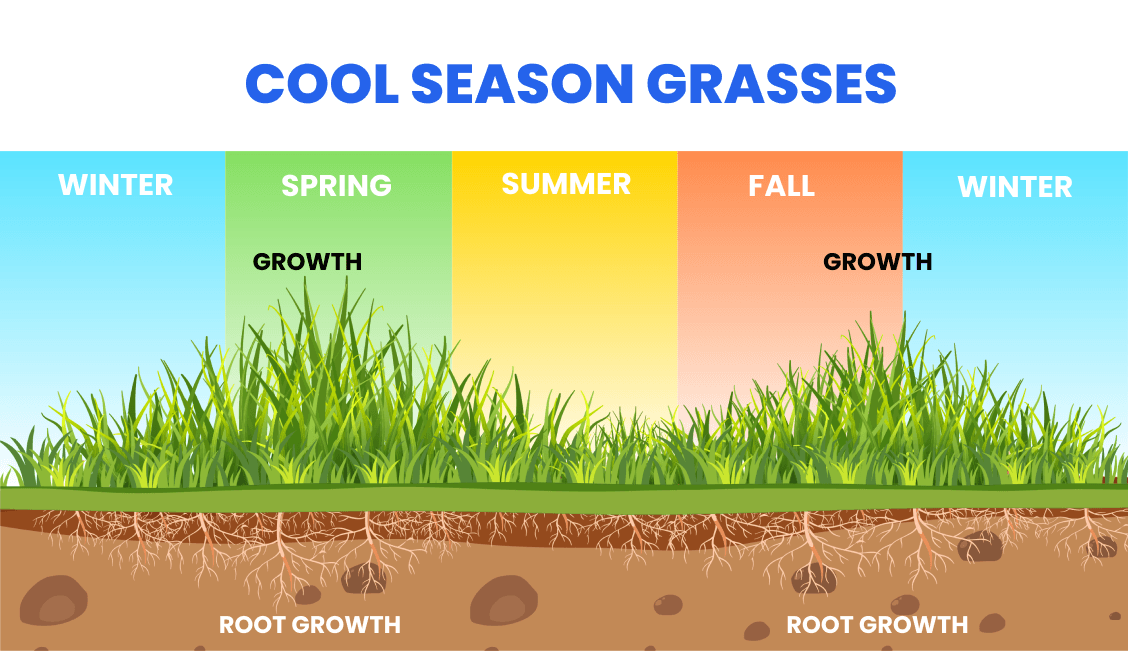
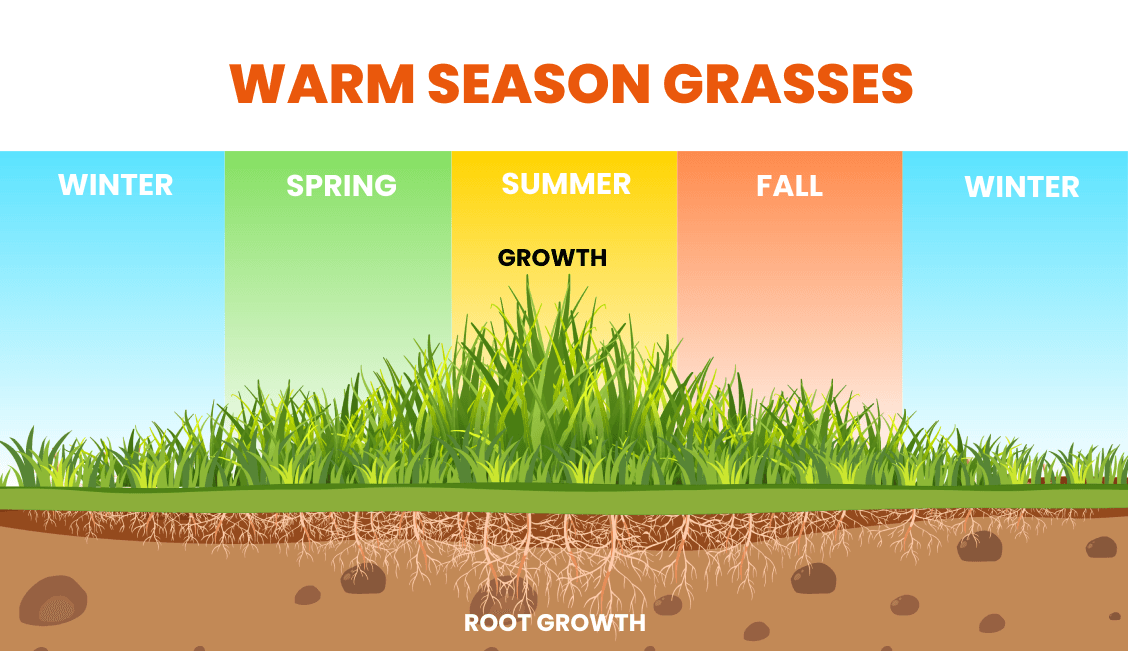
Find reputable companies for installing sod in PA
Here are the top problems you'll face when trying to get sod installed by a landscaping company:
- They're not transparent about pricing. You'll often get a quote that's way higher than you'd expect.
- They're hard to get ahold of on the phone or you'll reach out online but won't hear back.
- It's hard to pin them down for a specific date. Because you can only bring sod from the farm when there's decent weather, this causes some delays at times. It also has a short shelf life, so it's important to get it installed within a day or two of delivery.
We've done all the work for you. Click below to get a quote from one of the top installers in Pennsylvania.
